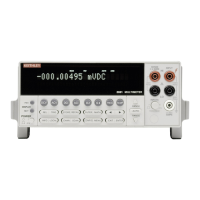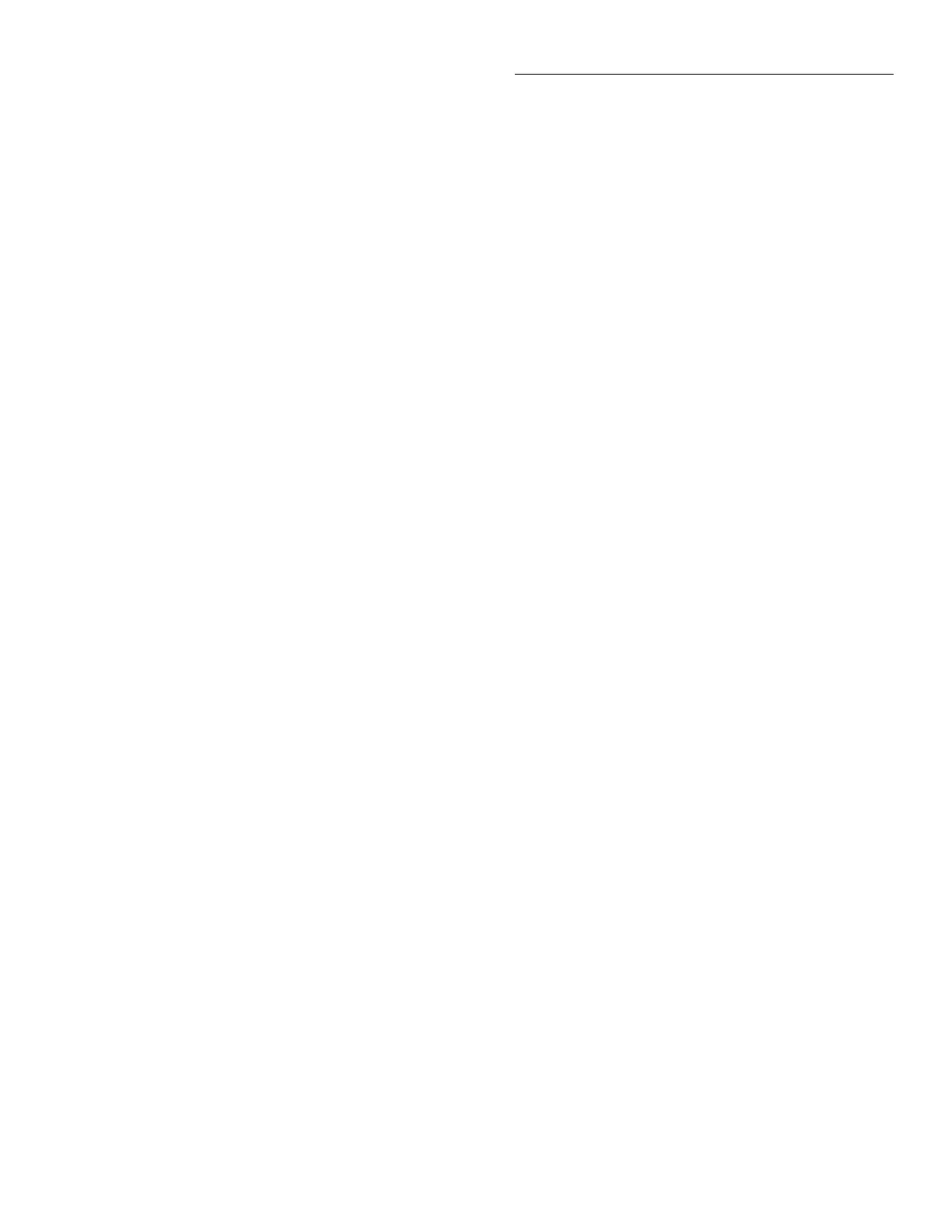Front Panel Operation
3-91
The state and configuration of the digital filter for each func-
tion is saved when changing functions.
• Pressing the FILTER key to enable the filter momentari-
ly displays one of the following typical messages:
Filter Enabled
Digital = AVG(10)
or
Filter Enabled
Digital = ADV(10)
or
Filter Enabled
Digital = AUTO
where: AVG is the averaging filter.
ADV is the advanced filter.
AUTO is the type listed in Table 3-36.
(10) is the number of reading conversions to average.
3.9.7 Analog filter
The Model 2001 has an analog filter for use with the DCV
function. This filter reduces the number of overflow errors
caused by noise seen on the input signal. The analog filter is
most effective when measuring voltages greater than 2 Vp-p
frequencies ranging from 10kHz to 1MHz.
Controlling the analog filter
Perform the following steps to enable or disable the analog
filter:
1. Press CONFIG and then DCV to display the DCV con-
figuration menu.
2. Place the cursor (using
▲
and
▼
keys) on ANALOG-
FILTER and press ENTER to display the control options
(ON or OFF). Cursor position indicates the present state
of the analog filter.
3. To change the state of the analog filter, place the cursor
on the alternate state and press ENTER.
4. Use the EXIT key to back out of the menu structure.
NOTE
The FILT annunciator on the display only
indicates the state of the digital filter. It is
not used for the analog filter.
Selecting the first multiple (NEXT) display for DCV enables
the analog filter. Leaving this multiple display returns the an-
alog filter to its previous state.
Analog filter characteristics
Figure 3-41A provides a simplified block diagram of the
Model 2001 showing the location of the analog filter. When
enabled, it provides a “cleaner” signal to the preamplifier. As
a result, readings are less noisy. The analog filter does not af-
fect any of the instrument’s specifications beyond those deal-
ing specifically with the filter function.
The analog filter is a single stage, single-pole, low-pass RC
network that rolls off the signal at an approximate rate of
20dB per decade above the cutoff frequency of 10kHz. The
analog filter has a zero at 600kHz. Figure 3-41B shows the
general frequency response for the analog filter.
The analog filter is most effective on the 2V or 20V range
with line synchronization enabled. On the 200mV range, a
noisy input signal may cause overflow readings even though
the analog filter is enabled.

